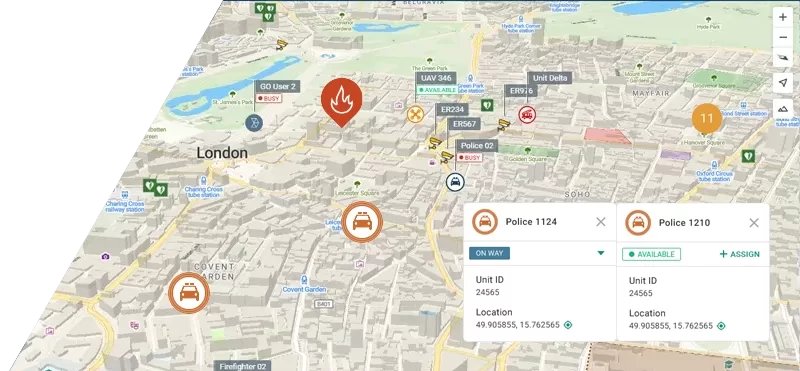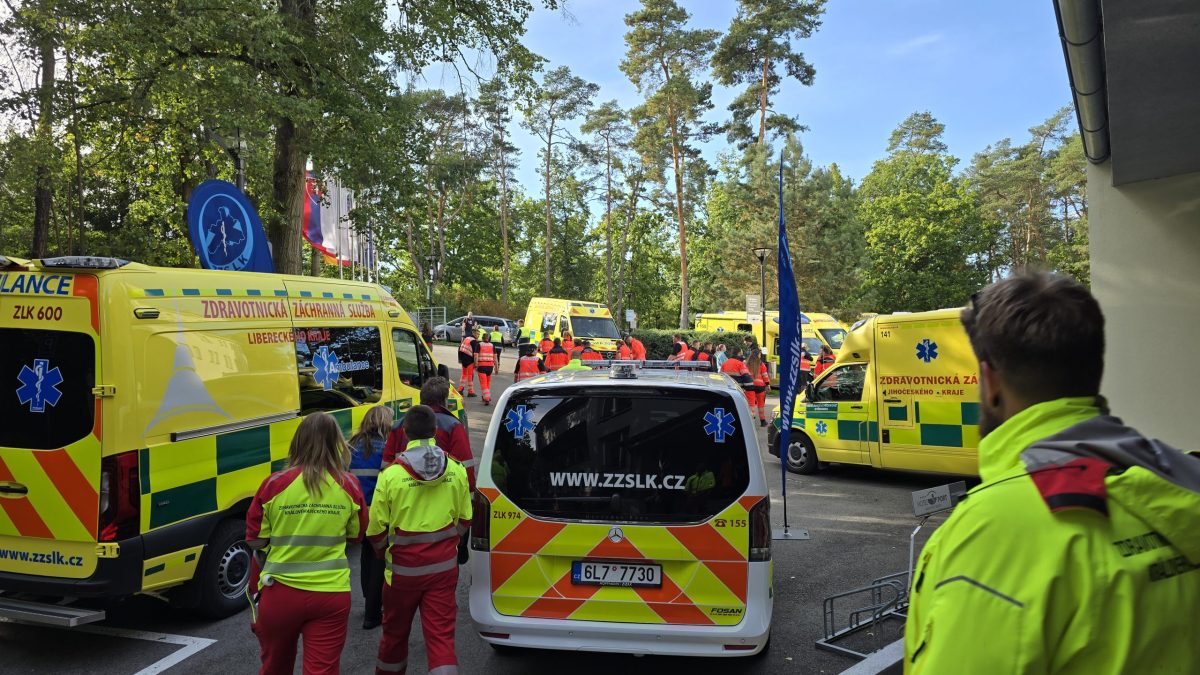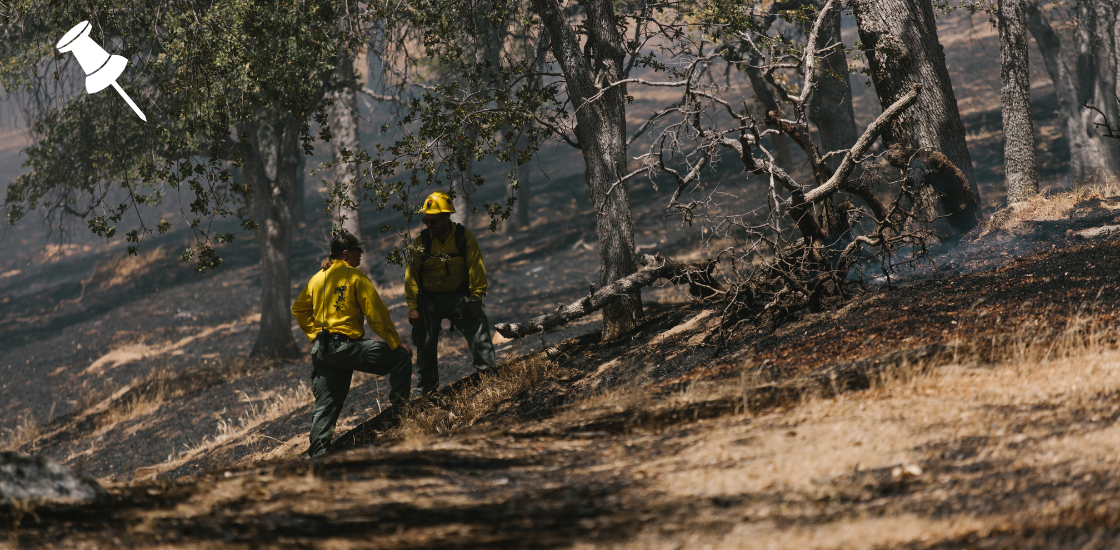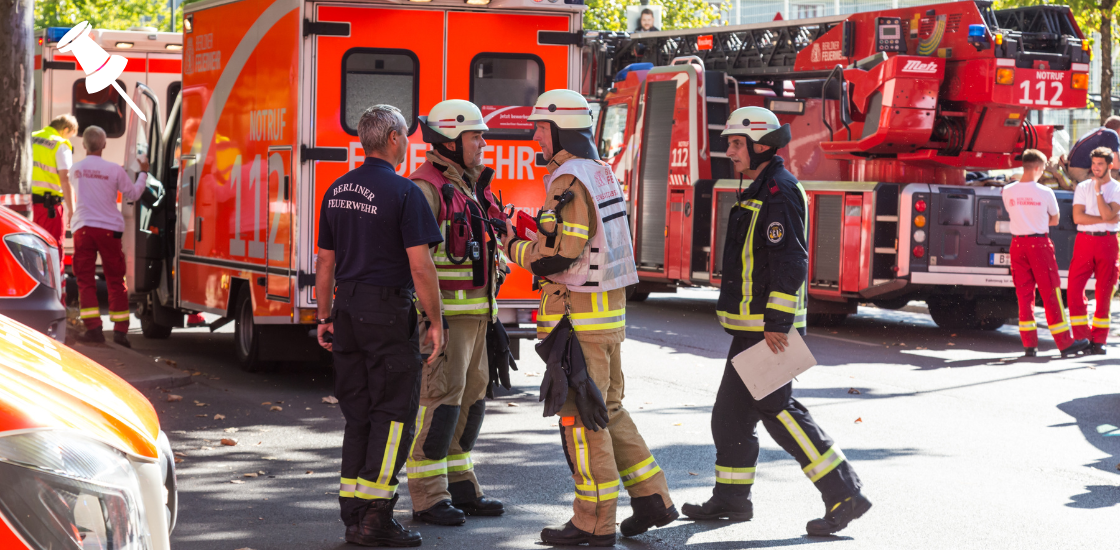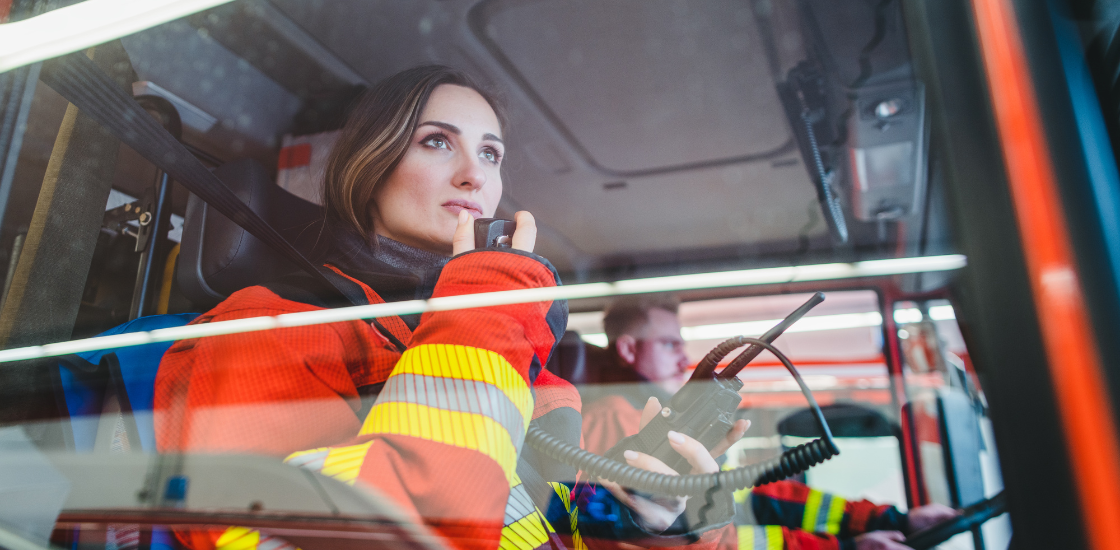Table of Contents
About the Training
Every minute counts in EMS operations. When someone calls 155 (the Czech national emergency number for medical help) the dispatcher must quickly assess the situation, assign the right units, and guide them to the scene as fast as possible.
In the Liberec region, emergency medical services have been continuously improving their coordination and communication systems to ensure that help arrives exactly where it’s needed and without delay.
During a P155 training exercise, dispatchers and ambulance crews demonstrated how GINA Tablets, integrated with Smart CAD, support fast, precise, and reliable response in real-life conditions.
This training highlighted not only how the system works in daily operations, but also how technology helps teams stay focused on what matters most, saving lives.
Challenges of Traditional Communication
Before modern digital solutions, dispatchers often relied on voice communication over radio and handwritten notes to track ambulance locations and statuses. This created challenges such as:
- Limited real-time visibility of where units were and what their current status was.
- The risk of miscommunication or delays during high-pressure calls.
- Time-consuming paperwork and manual reporting for ambulance crews after each mission.
Training exercises like P155 in Liberec are designed to test the system under realistic conditions and identify areas where technology can make operations smoother, faster, and safer.
How the System Worked in Practice
During the P155 training in Liberec, ambulance crews relied on GINA tablets as their main operational tool in the field. Each step of the response, from receiving the call to completing the mission, was managed directly through the tablet. When connected to the Smart CAD dispatch system, the tablets become part of a fully digital emergency workflow that connects field teams and dispatchers in real time.
When the 155 emergency number was dialed, the dispatcher entered the incident details into Smart CAD, including the type of emergency, location, and patient condition. Smart CAD then automatically identified the nearest available unit and sent the assignment directly to the crew’s tablet. Before arriving at the scene, the field teams already had a complete overview of the situation and knew exactly what they were heading into, including critical points of interest such as nearby AEDs, hydrants, and hospitals.
The integrated navigation guided them along the fastest route, continuously updating as conditions changed. With all details immediately available, crews were able to respond without delays or manual coordination. When needed, they used push-to-talk (PTT) to stay in direct contact with the dispatch center.
As the mission unfolded, crews updated their status (for example en route or on scene) directly on the tablet. Paramedics could also share photos or stream live video from the scene and give dispatchers an immediate view of the situation. This seamless connection created a shared operational picture that supported faster, more informed decisions.
After completing the mission, crews completed their digital report right on the tablet. All details, including timestamps, notes, and mission details, were automatically stored in the system, which reduced paperwork and ensured accurate documentation.
Key Outcomes
The Liberec training clearly demonstrated the importance of digital coordination in emergency response:
- Faster response times, with crews fully informed before arrival and guided by real-time navigation.
- Real-time situational awareness for dispatchers through automatic status updates and live data from the field.
- Streamlined communication, supported by instant push-to-talk (PTT) and multimedia sharing, ensuring clarity even under pressure.
- Reduced administrative workload, as digital reporting replaced paper forms and manual data entry.
- A shared operational picture with live mapping and points of interest, that enabled faster, more confident decisions in dynamic conditions.
The exercise confirmed that a connected digital workflow can significantly enhance the speed, accuracy, and reliability of emergency response. With clear communication and real-time insights, emergency medical teams were able to focus fully on what really matters.
